My Holiday Centerpieces for BH&G: Seasonal and Local Winter Greenery – and More!
November 17th, 2013

The beautiful cover of Better Homes & Gardens’ December 2013 issue. My “Winter Greens” article and designs appear on pages 58-64.
In the December 2013 issue of Better Homes & Gardens, on newsstands this week, you’ll find a Winter Greenery-inspired story that I produced with photographer Laurie Black. We created this story nearly 3 years ago, and while often there’s no rhyme or reason as to why a piece takes so long to see the light of day, I’m thrilled you can see it now!
This story features four “regionally-inspired” centerpiece designs with flowers, foliage and branches that you might find in Southern California, the Midwest, the South and the Northeast. The fifth idea, a Northwest-style centerpiece, didn’t make it to the pages – but I’ll share those images (mine, not Laurie’s) below.
I owe a huge thanks to editor-in-chief Gayle Goodson Butler for deciding to share my beautiful wintry bouquets with BH&G’s readers in time for their own holiday design projects. I’m also grateful to the magazine’s garden and outdoor living team, including deputy editor Eric Liskey (who originally commissioned the story) and senior associate editor Jane McKeon (who shephered it through the editing process). It takes a village to bring a great idea to the pages of a magazine!
Due to space constraints, like many BH&G articles, there isn’t much real estate on those pages for text – photography rules! So here is the original article as I wrote it – and a few bonus photographs!
Filled with holiday cheer
Wintry centerpieces inspired by what grows in your own backyard
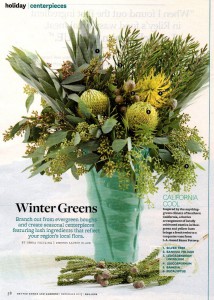
All the California-grown elements to this bouquet come from Wild Ridge Organics in Salinas, Calif. The awesome retro-vase is from Bauer Pottery in Los Angeles.
Decorating with cedar sprays and pine boughs is a cherished holiday tradition for many of us. But this year, why not branch out? Use familiar greenery that reflects your part of the country — the forests, fields, mountains or beaches — to create uniquely local and lush holiday centerpieces. Choose a regionally-inspired vessel and add seasonal foliage, branches and berries paired with blooming plants or forced bulbs. The holiday arrangement will last for a few weeks on your dining table or fireplace mantle. Naturally beautiful, of course.
California Cool
The turquoise glaze of a made-in-California Bauer Pottery vase enhances a blue-green and yellow bouquet. The floral ingredients, all native to Australia and South African but grown in California, are thoroughly adapted to Southwest gardens and bloom from October through May. Seeded eucalyptus and velvety sprays of silver tree (Leucadendron argenteum) serve as foliage, while the arrangement’s drama comes from Banksia and pincushion flowers (Leucospermum sp.).
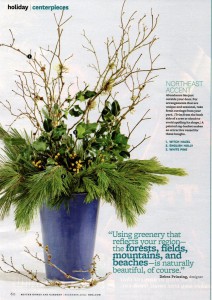
Pine boughs, yellow-berried holly and lichen-covered branches are New England-inspired, gathered into a reclaimed sap bucket.
Northeast Accent
A painted sap bucket seems fitting for this New England-themed winter arrangement, its weathered patina contrasting with the gold berries of the English holly. Long-needled pine boughs cascade over the bucket’s rim while lichen-covered twigs, cut from a deciduous tree, lend height to the design. This elegant arrangement shows how easy it is to combine just three ingredients for impact.
Midwest Spin
Reminiscent of winter at a woodland lodge, a woven pine needle basket is deep enough to hold a nest of fir branches. For texture and color, we chose pussy willows and huckleberry branches, plants typically found growing along streambeds in Minnesota or Montana.
Southern Charms
A classical urn may typically be found outside in the garden, but it has come indoors for the holidays. The vessel contains a thoroughly Southern-themed arrangement. Common boxwood branches create the soft foundation for shiny magnolia boughs.
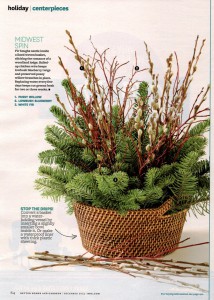
A Midwest-themed arrangement in a woven basket, with textural touches from twigs and pussywillow branches.
We added several lovely amaryllis stems (cut from a potted plant). The buds should look fresh and continue to open for more than a week.
Design tips:
1. Take a walk outdoors: Observe nature and your own backyard to find unexpected ingredients for holiday decorating. When removing branches from the landscape, cut from the back side of a tree or shrub, or take random cuts, so as not to denude your plants. Use sharp, clean pruners. Store branches in a bucket of tepid water until you are ready to arrange them.
2. Choose plants for their design attributes. To create a balanced holiday arrangement, include at least one ingredient that cascades or drapes. Select at least one tall, upright ingredient. And choose at least one dramatic element that gives the design its focal point.
3. Convert interesting vessels a watertight vase. Line containers that have a drainage hole with a slightly smaller plastic bowl. For wood planter boxes, make a waterproof liner with a double layer of thick, plastic sheeting, secured to the inner edge with staples. Double-check for leaks before placing on furniture or a counter.
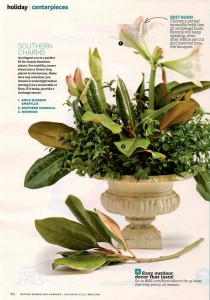
I loved making this Southern-themed bouquet, with evergreen magnolia foliage, boxwood and amaryllis clipped from a potted potted plant.
4. Stabilize woody stems. Place a pin- or cage-style flower frog inside the container to hold branch stems. Or, form a 12-inch length of chicken wire into a loose ball. Insert it inside a container to hold stems in place as your arrangement takes shape.
5. Keep water fresh. Your arrangement will last up to three weeks if it doesn’t dry out. Refresh water every few days. An easy trick is to place the arrangement in your kitchen sink, positioning the faucet or spray nozzle inside the edge. Turn on the water and allow it to gently fill the vase. As it begins to overflow, fresh water will displace the older water. Make sure to dry off the exterior of your vase before displaying it again.
Here’s what you missed! I took these photos while we were producing this story at the home of photographer Laurie Black and her husband Mark King. My friend Nancy Finnerty styled the tabletop for us. It’s such a pretty scene that I had to share.
Adorn your table with local greenery
Bring the bounty of nature indoors to create winter-themed centerpieces for your holiday table. The evergreens that decorate this Sunday brunch repeat the majestic trees seen outside, making a visual connection with the landscape.
From the Northwest
Convert a rustic wood planter box into a low, conversation-friendly centerpiece. First, arrange conifer branches, such as Western red cedar (used here), or sprays of juniper or hemlock, positioning them to drape over the box’s edge. For a creamy-white touch, we added flowers from the winter-blooming lily-of-the-valley shrub (Pieris japonica); red-twig dogwood branches, arranged in irregular clusters, provide a graphic accent.









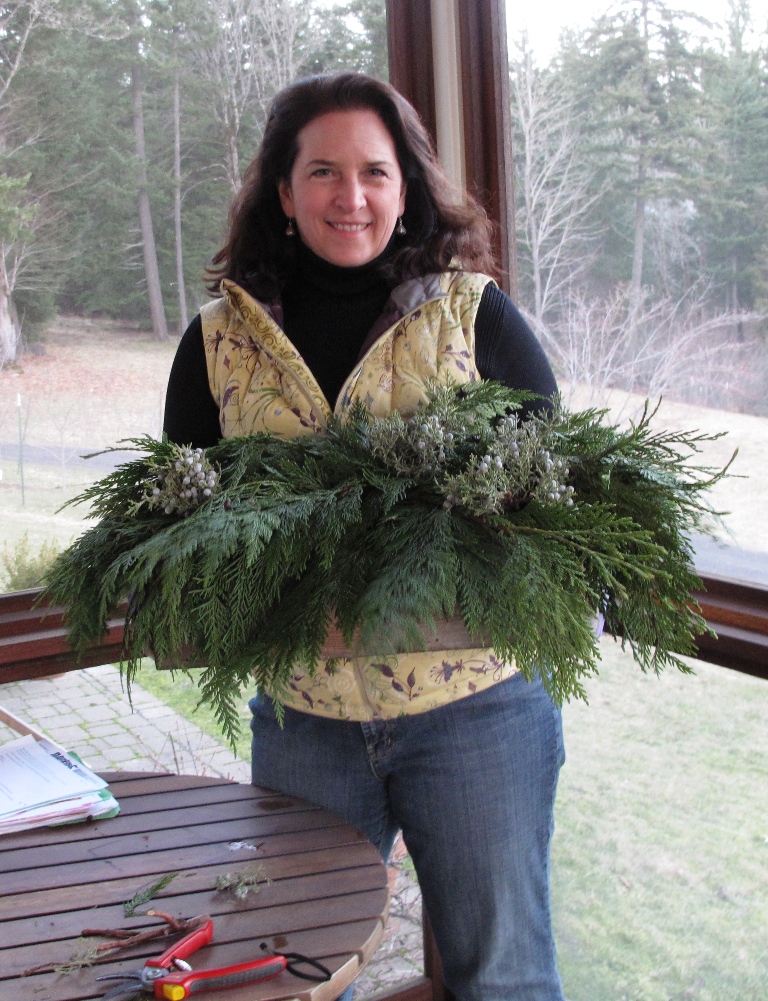
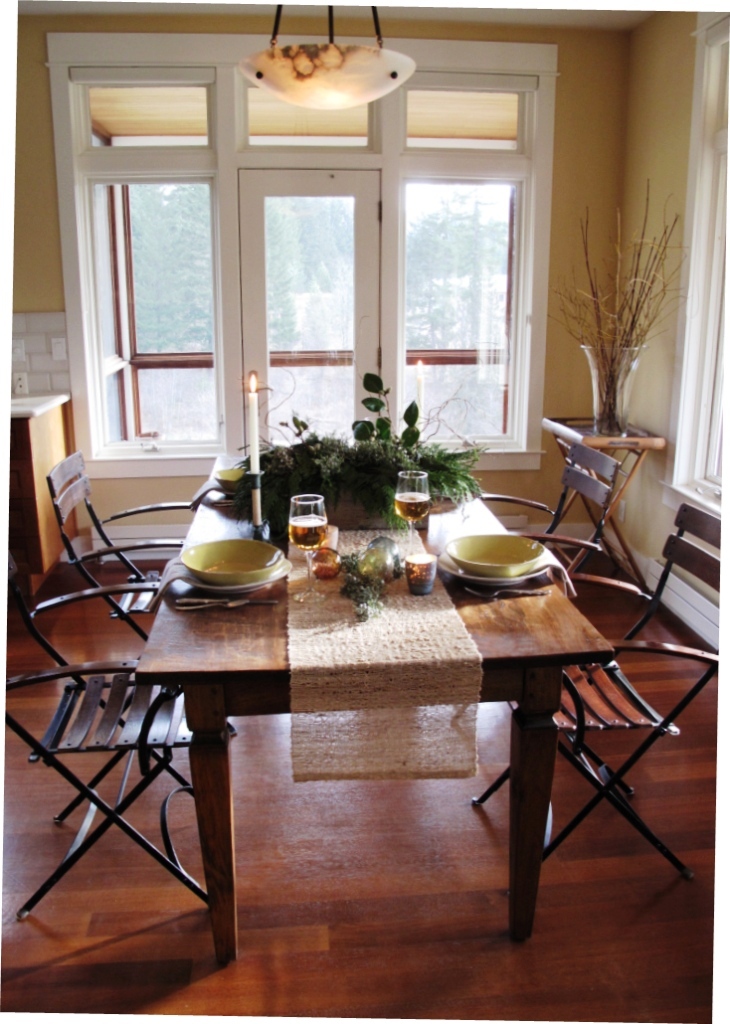
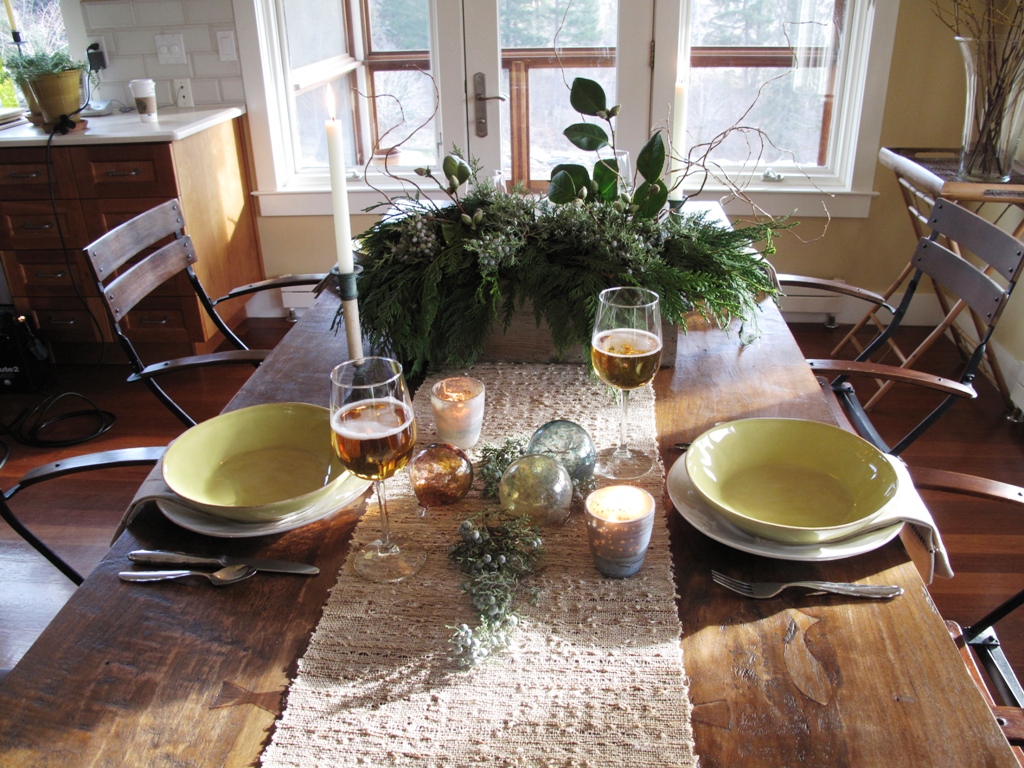
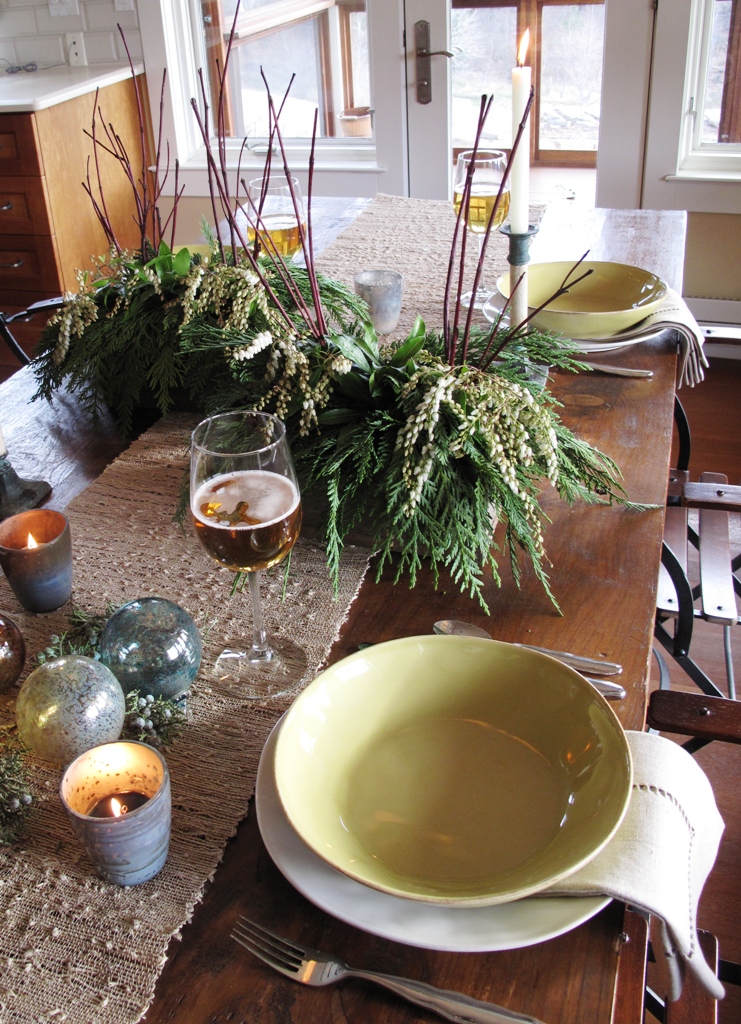
November 17th, 2013 at 11:01 pm
Love these ideas! Off to find my pruners
November 23rd, 2013 at 9:23 am
[…] As Seen in the December 2013 issue of Better Homes & Gardens […]